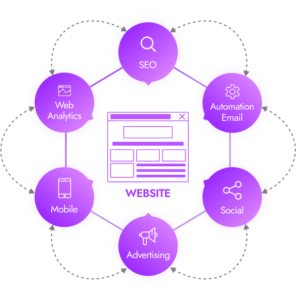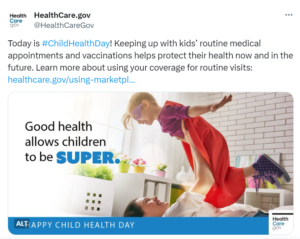The world of healthcare has changed. It is driven by new technologies and changing expectations from the patients’ side. Amidst such high competition, healthcare organizations stand at much more stake than providing quality care; they have to be perceived as a strong and trusted brand. Innovative marketing tactics can make a difference in establishing your healthcare brand unique and connect with your audience on a deeper level.
In this exhaustive guide, we’ll walk you through effective marketing strategies that can amplify your healthcare brand, whether you’re a hospital, clinic, or health service provider.
1. Building a Healthcare Brand Identity
Your healthcare brand identity is what one would call the very foundation of all your marketing endeavors. This should include your mission and vision, values, and the total image you wish to project for your patients and society. A well-defined brand identity facilitates trust, consolidates patient loyalty, and increases your credibility in the marketplace.

Key Elements of a Strong Healthcare Brand Identity:
- Logos and Visuals: Your logo, color palette, and design elements reflect the values and professionalism of your healthcare brand. Consistency in visuals makes you more distinctive and memorable.
- Tone of Voice: The way you actually speak to them, well-that’s very important. Are you professional and authoritative or compassionate and easy with whom to talk? The language of your messaging should be that which best resonates with your patients, reflecting your brand’s personality.
- Mission Statement: This overtly states what your healthcare organization is all about. Patients will most likely choose a healthcare provider whose values align with theirs.
By creating a strong, unified brand, you will ensure that each and every patient touchpoint-online or offline-is consistent and is a reflection of your healthcare organization’s ethos.
2. Leverage Healthcare Digital Marketing Channels
Digital marketing is among the tools required in today’s healthcare. It is through this channel that you reach your target patient, educate them on what you offer, and even build a relationship.
a) Search Engine Optimization (SEO)
These patients will be searching for health services, and you want your website to come out on top of the search list. SEO is going to help in optimizing both your website and its content to rank high in search engines, particularly Google.
Key Term Research:
This would determine the key terms that patients use to find healthcare providers in your area and would include those keywords within the website, blog, and services descriptions

- Local SEO: Optimize the website for local search by claiming your Google My Business listing and standardizing locations, services, and contact information across all profiles.
- Quality Content: Regularly update your website with high-quality, informative content that addresses patient concerns, educates them about health matters, and promotes your services. A strong blog will drive traffic and build authority in your niche.
- b) Pay-Per-Click Advertising (PPC)
Pay-per-click targeting, such as Google Ads targeting, can be performed based on both the search query and demographics. This is an excellent way to attract immediate traffic to your website, particularly when you are promoting new services.
- Targeted Ads: With pay-per-click targeting, you can run highly targeted ads that will show up in search results at the exact moment when your patients are actively searching for healthcare services.
- Remarketing: Use re-marketing techniques to reach out once more to those potential patients who visited your website and did not convert into the action, such as making an appointment.
- c) Social Media Marketing
Social media platforms like Facebook, Instagram, and LinkedIn are fabulous avenues for health care organizations to reach out to their present and potential patients.
- Patient Education: Educate on health topics through posts, promote wellness tips as well as create awareness about services offered.
- Patient Testimonials: Success stories, patient testimonials, and case studies can also go a long way in gaining the trust and credibility of your target audience. Engage and Interact: Encourage your followers to ask questions, provide feedback or reviews, and give their responses to the posts you put up in order to create a sense of community.
- Leverage Telemedicine and Virtual Healthcare Services
The COVID-19 pandemic accelerated the implementation of telemedicine, and it’s here to stay as part of mainstream medicine in one form or another. By offering telemedicine, you differentiate yourself and appeal to those patients who feel convenience is more important with virtual consultations.Promoting Telemedicine Service via Social Media
- Convenience: The ease with which it is now possible to obtain medical care from the comfort of one’s home, particularly for patients living in rural areas or with disabilities in mobility.
- Educate Patients: Develop guides or video tutorials on how to use your telemedicine platform, ensuring the patient is comfortable and confident in using the technology.
- Targeted Campaigns: Leverage digital ads or email campaigns to promote the availability of telemedicine services to those most likely to take advantage of this modality, such as busy professionals or parents of small children.
By offering telemedicine, you don’t just make your patients happy-you set up your brand as a forward-thinking innovative health provider.
- Create Engaging Patient-Centric Content
Content marketing is one of the most effective ways to educate your audience while establishing your brand as an authority in the healthcare fraternity. This will be truly instrumental in the creation of value for your patients, which is relevant and timely.
Types of Content to Amplify Your Healthcare Brand:
- Blog Posts: Discuss general health issues, tips for a healthy lifestyle, or any new treatments and technologies.
- Video Content: Explainer videos, patient testimonials, and interviews with doctors show a more personal touch.
- Infographics: With visual material like infographics, patients will find complex medical issues easier to understand.
- Newsletters: Send out regular email newsletters about new services, health tips, and promotions.
- Personalized Content: You will have the ability to utilize data from your CRM system to create content based on focused segments of your patient population.
For instance, send diabetes management e-mails to diabetic patients, and promote wellness checkups to families with young children. Personalization enhances engagement and creates loyalty in patients.

- Establish Referral Programs
Word-of-mouth referrals remain one of the most potent ways to attract new patients. While satisfied patients will refer your services to friends and family, a structured referral program may be able to provide further incentives for them to do so.Building a Successful Referral Program:
- Reward Referrals: Give incentives to patients for referring new patients to your practice. This may come in the form of discounts on any future services, gift cards, and/or donations to charity on behalf of the referring patient.
- Make It Easy: Make it as easy as possible to refer a friend through an online form, via email, or with printed referral cards in your office.
- Track and Optimize: Data will help you see what types of referrals are working best and can help you adjust your program over time for the best success.
- Leverage Online Reviews and Testimonials
In the medical field, trust is everything. Most patients will Google reviews and/or read testimonials to determine how good your organization is before making decisions in regard to their health. Managing positive reviews and encouraging them can go a long way in boosting the reputation of your healthcare brand.
Strategies to Encourage Positive Reviews:
- Request Reviews: Immediately after having a positive interaction with a patient, ask him/her to leave a review on Google, Yelp, or your website.
- Respond to Reviews: Be sure to respond professionally to all reviews from your patients. Respond to positive and negative feedback alike. This helps demonstrate that you actually care about what they have to say and are always looking for ways to make the experience better.
- Highlight Testimonials: Display patient testimonials on your website and social media to show actual care stories and successes.
The positive reviews not only boost your online reputation but also play an important role in local SEO in order for you to get discovered more by the patients.
7. Healthcare Influencers and Partnerships
Partnerships with healthcare influencers or other organizations may come in handy for wider reach and credibility. Influencers in the healthcare space may be medical professionals or health bloggers who can give valued endorsements and introduce your brand to new audiences.
Types of Partnerships:
- Expert Collaboration: If you are a general practitioner, you can collaborate with specialists with the aim of referring patients to them while getting referrals back to you.
- Influencer Collaboration: Health influencers can be used to develop content or even execute campaigns that bring out your services or products.
- Community Involvement: You will offer support for health events or collaborate with non-profit organizations around your community in order to position your brand as a leader within.
- Monitor Performance Using Data Analytics
And last, but not least, is the data piece. In order to have effective healthcare marketing, you want to track performance of efforts and make data-driven decisions. Analytics tools can help you measure key metrics including but not limited to:
- Website Traffic: How many people come to your site, and where do they come from?
- Conversion Rates: How many visitors are taking action on your site?
- Engagement: In what ways are patients engaging with your content on social media, email, and other sources?
By regularly analyzing data, one can come to a realization of what works, what does not work, and how one can optimize marketing tactics to assure the best return on investment.
Conclusion
Innovative marketing strategies are what keep the lifeblood flowing into your healthcare brand within a competitive market. Building a strong brand identity, using digital channels, developing patient-related content, and applying data analytics will put you in a better position to effectively reach your audience, foster loyalty among your patients, and ultimately meet success over time.
At Madavi Agency, we craft bespoke, data-driven marketing strategies for healthcare organizations. Ready to elevate your healthcare brand? Have questions? Contact us today and learn how we can drive the implementation of state-of-the-art marketing tactics that will get you measurable results.

